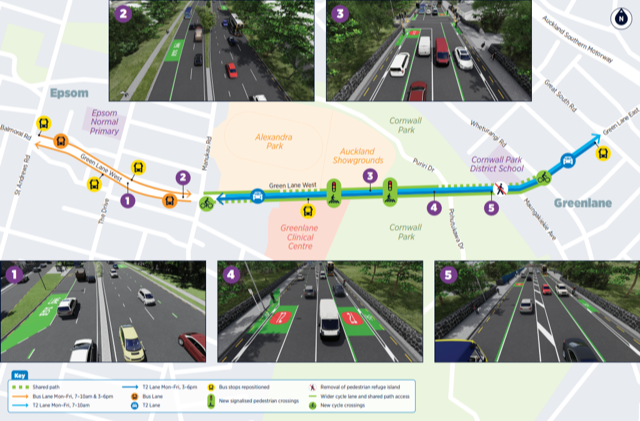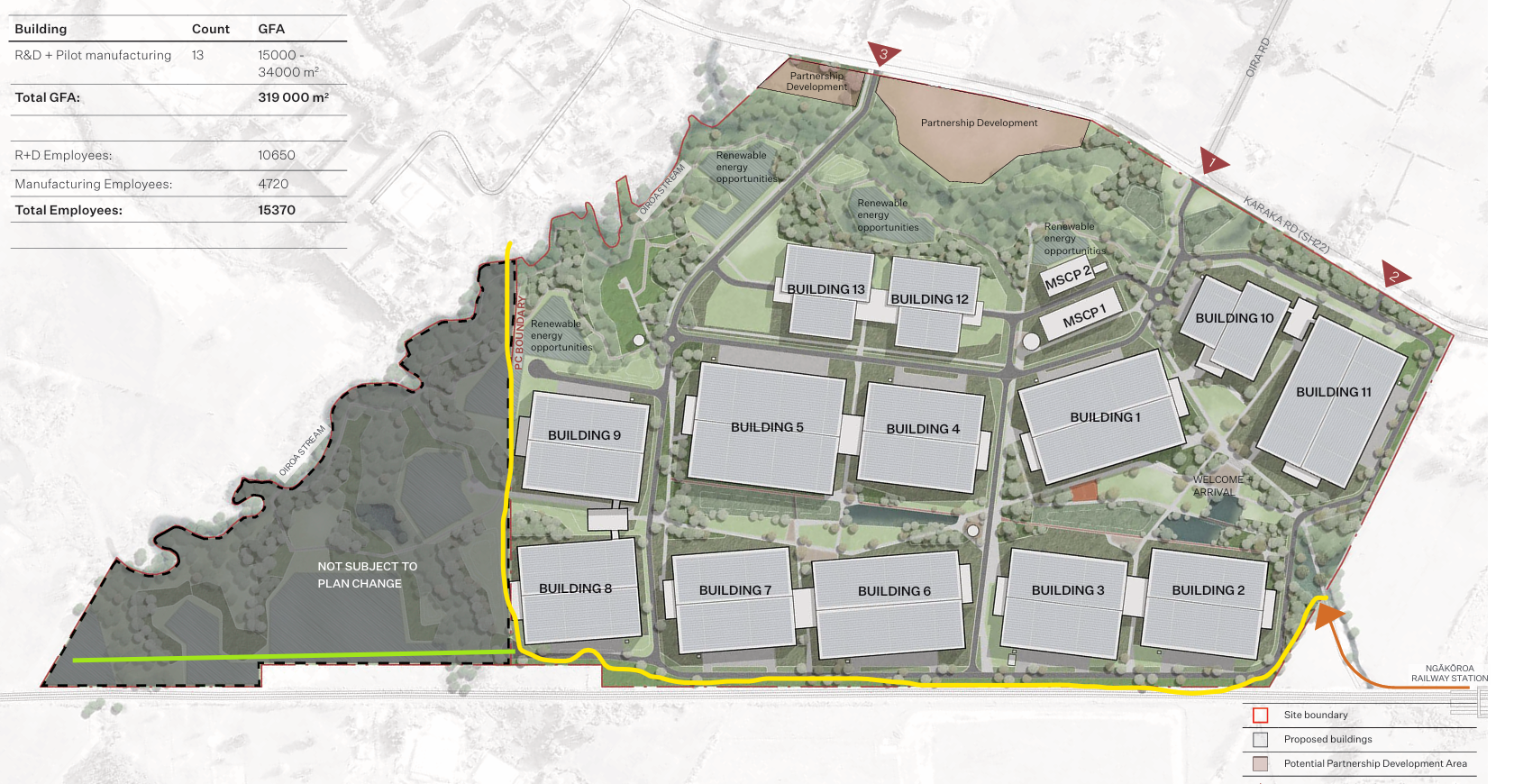Bike Auckland’s Chief Biking Officer Fiáin d’Leafy explains how our inequitable transport system will be exacerbated by the upcoming closures of train lines – and the opportunity Auckland Transport and Auckland Council have to fix it. Want to see action on transport inequity in your area? Check out our tips for writing to your elected representatives.
In October KiwiRail announced closures of many of Tāmaki Makaurau Auckland’s passenger train services for overdue works on the foundations of the rail tracks. Some train lines will be closed for a few months, and some for as long as 10 months. They are aiming to complete this work in 2025 to line up with the opening of the City Rail Link.
Although Auckland Transport will schedule buses to replace these train lines, Bike Auckland are concerned that the buses they currently use are not accessible for all passengers. Many passengers who use mobility devices, who have pushchairs, or who need to take a bike with them to complete their journey will not be able to use these train replacement buses.
Auckland Transport’s current bus service already suffers from regular cancellations, largely due to staffing shortages, and train replacement buses tend to take longer to reach their destinations than trains (due to getting stuck behind car traffic), causing the general public to have little faith that this service will be a true replacement for trains.
Bike Auckland says that if there isn’t an adequate alternative transport option, people may be forced to drive for their trips instead, which would increase our emissions and worsen our traffic congestion. We know that we cannot build our way out of congestion – adding more lanes for cars just causes more congestion – but giving that space to people walking, cycling, using mobility devices, scooters, and public transit reduces congestion as people no longer need to drive their cars.
Bike Auckland’s Chief Biking Officer Fiáin d’Leafy urges Auckland Transport and the recently elected Councillors at Auckland Council to take this opportunity to make the transport system more equitable – with a fast roll out of safe cycleways, bus priority lanes, and improvements to buses to make them more accessible.

An in-equitable system
“What we have in Tāmaki Makaurau Auckland right now is a transport system that creates car dependency. And the rail closures threaten to exacerbate that. Because our city has been built for cars, the easiest way to get around is to drive a car. But this means that the more than ⅓ of Aucklanders who do not drive* do not have a safe and convenient way to get around.” D’Leafy points out the inequity of our transport system.
“People become locked into owning a car when they cannot afford to; in order to get to work, to safely transport their whanau, their children, they are paying for this car because there isn’t another easy option in the area that they live. We are digging many in our community further into poverty with the high cost of owning and maintaining a vehicle, and because, in many areas, our transport system does not provide a safe and convenient alternative to driving.”
D’Leafy says that providing safe bike lanes and convenient public transport is crucial for giving people the choice to not own and pay for a car, helping many who are currently in poverty, as well as for people’s health and wellbeing.
“For me, my bike is like a mobility aid. I have problems with my joints, particularly one of my ankles, and, when it’s bad, even walking from a bus stop to my destination can be painful. Cycling is easy on my ankle and enables me to get right to the door of where I’m going, so it gives me a lot more independence and freedom. I feel safer when my bike is with me, because I can easily get away if anyone is being aggressive, and because I have certainty I won’t be in pain while trying to get somewhere.” D’Leafy points out that there is a misconception that cycling is only for able-bodied people, but that cycles can be mobility aids for many people. “I am lucky to have been able to get an e-bike, which lets me travel so much further and zoom up the hills without hurting my wrists. Back when I had a pushbike I usually took my bike on the train and cycled from the station to my destination. Walking from a public transit stop was often too painful and slow for me – I’d end up driving if I couldn’t take my bike.”
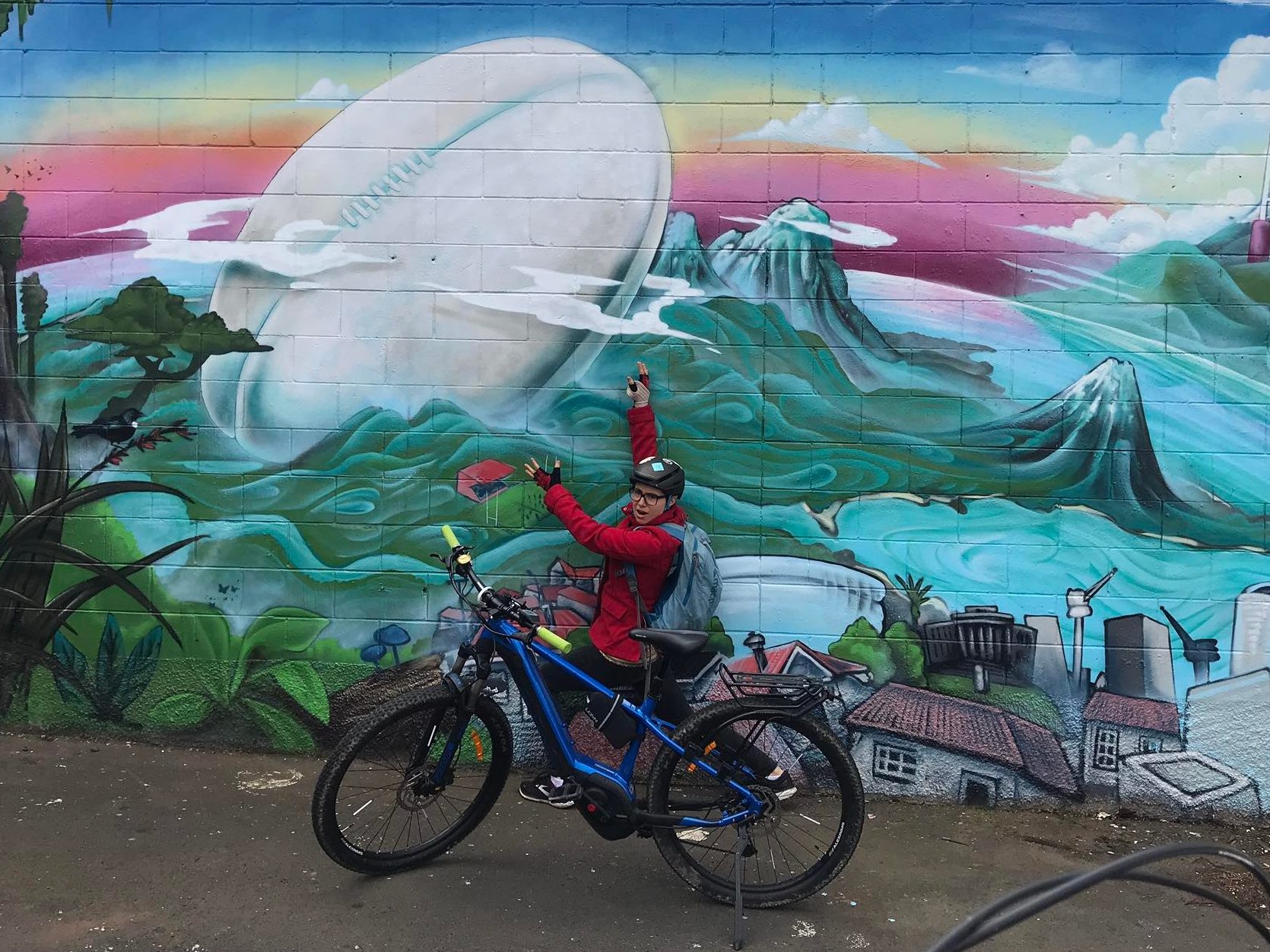
With the impending rail line closures, giving people the choice to not drive means creating more safe cycleways fast, more bus priority lanes, and sourcing (or creating) accessible buses which can easily take bikes, mobility devices, and pushchairs. D’leafy suggests a more accessible bus could be a double decker bus with the majority of its seating upstairs, and an open space for bikes, mobility aids, and pushchairs at the bottom, though the entrance would also need to be accessible.
“There are bike racks on buses in Ōtautahi, Christchurch, and in Pōneke, Wellington, which is working well for many people. So we could do that here and that would be great. But we also need a fast solution which will also provide access for disabled people and for parents. I know that many of these people find accessing a train much easier than trying to access a bus – and the rail closures are taking that freedom of movement away. That’s a big issue with our public transit system which we need to fix.”
Auckland Transport have stated that they will be providing free mobility taxis on request for people who use wheelchairs and mobility scooters to replace their train trip. But mobility taxis are often only available if they are pre-booked well in advance, they are also experiencing driver shortages, and this option is unlikely to provide the same independence that the trains currently provide.
“We also need to focus on quick, easy to deliver bike lanes so that people (who are able to cycle) can have that as a safe transport option. Ideally these routes would tie in with the rail closures so that they are a replacement option – such as completing the Ngapipi road interim cycleway in Central East Auckland, providing the missing link in a safe commuting corridor from Glen Innes to the CBD, before the Eastern train line closes in March 2023.” D’Leafy points out that one of the easiest ways to reduce emissions is to encourage people to ride a bike – but that most people will choose to drive if they live somewhere that feels unsafe to cycle and if public transit doesn’t work for them.
Reducing Emissions
This year, Auckland Council committed to the Transport Emissions Reduction Pathway (TERP), which includes a 64% reduction in transport emissions (from 2019 levels) by 2030, in line with Te Tāruke-ā-Tāwhiri: Auckland’s Climate Plan. To reach Auckland Council’s emission reduction target, the TERP says 8% of all trips will need to be taken by bike and 9% by micromobility by 2030.
To help reach this goal, Gen Less are encouraging people to think about leaving the car at home one day a week. “One car-free day each week would make a huge dent in our carbon emissions: even if just one in five of us switch the car for active transport (biking, scootering, or walking), or even work at home one day a week, we could avoid 84,000 tonnes of carbon emissions each year – that’s like taking 35,000 cars off the road for good.” (Gen Less website)

D’Leafy says that in many places in Tāmaki Makaurau Auckland our roads feel too unsafe for people to have the choice to ride a bike, even if they want to.
“When it’s safe, people do choose to cycle for transport. 50% of Aucklanders say they would cycle if they felt safe enough to. We saw that here in Tāmaki Makaurau during lockdown when the roads were quieter, and we’ve also seen it in many places worldwide. We can help to reduce congestion and emissions by quickly providing more safe cycle routes, especially along arterials. This gives people more choice for how they travel, and is an essential response to the rail lines being closed for such long periods of time. Some disabled people cycle too, some use their bike as a mobility aid, like me, and more would, if we built safe and accessible cycleways. ”
Our new Mayor, Wayne Brown, will be glad to know that cycleways and active modes projects almost always provide benefits that far outweigh their costs. In 2018 a NZ study concluded that investing in walking & cycling would provide at least $10 in benefits (such as improvement in physical health and reduction in emissions) for every $1 of cost. Protected cycleways also make streets safer for all people who use them, drivers included! And safe cycleways and bus priority lanes can be easily created in a fast and cheap way; by removing car parking and flush medians on main roads and replacing them with safe cycle lanes or bus priority lanes instead.
The Parking Strategy
Since 2015 Auckland Transport has had a Parking Strategy which aims to improve safety, accessibility, public transit efficiency, and to reduce dependence on car travel. Unfortunately most elements of this strategy have not been implemented, and its aims have not been realised. Perhaps this is something which Mayor Wayne Brown could fix for us.
A new draft Parking Strategy was released in April this year, as a “refresh” intended to overcome the obstacles which have blocked the previous one. This will soon be in front of the new Council. Although it’s unclear if the new strategy has as much potential as the old strategy, starting to implement either of them would enable us to create a network of safe and convenient footpaths, cycleways, and bus priority lanes much faster, and in a more cost effective way.
“We understand why many people are upset at the thought of having parking removed from roads, and not being able to easily find a carpark, especially if they are used to driving being their only safe and convenient choice for getting around. But the real solution isn’t keeping the parking in, it’s making it easier to choose other ways of getting around, which are better for our lives, better for our planet, and more efficient uses of our public space.”
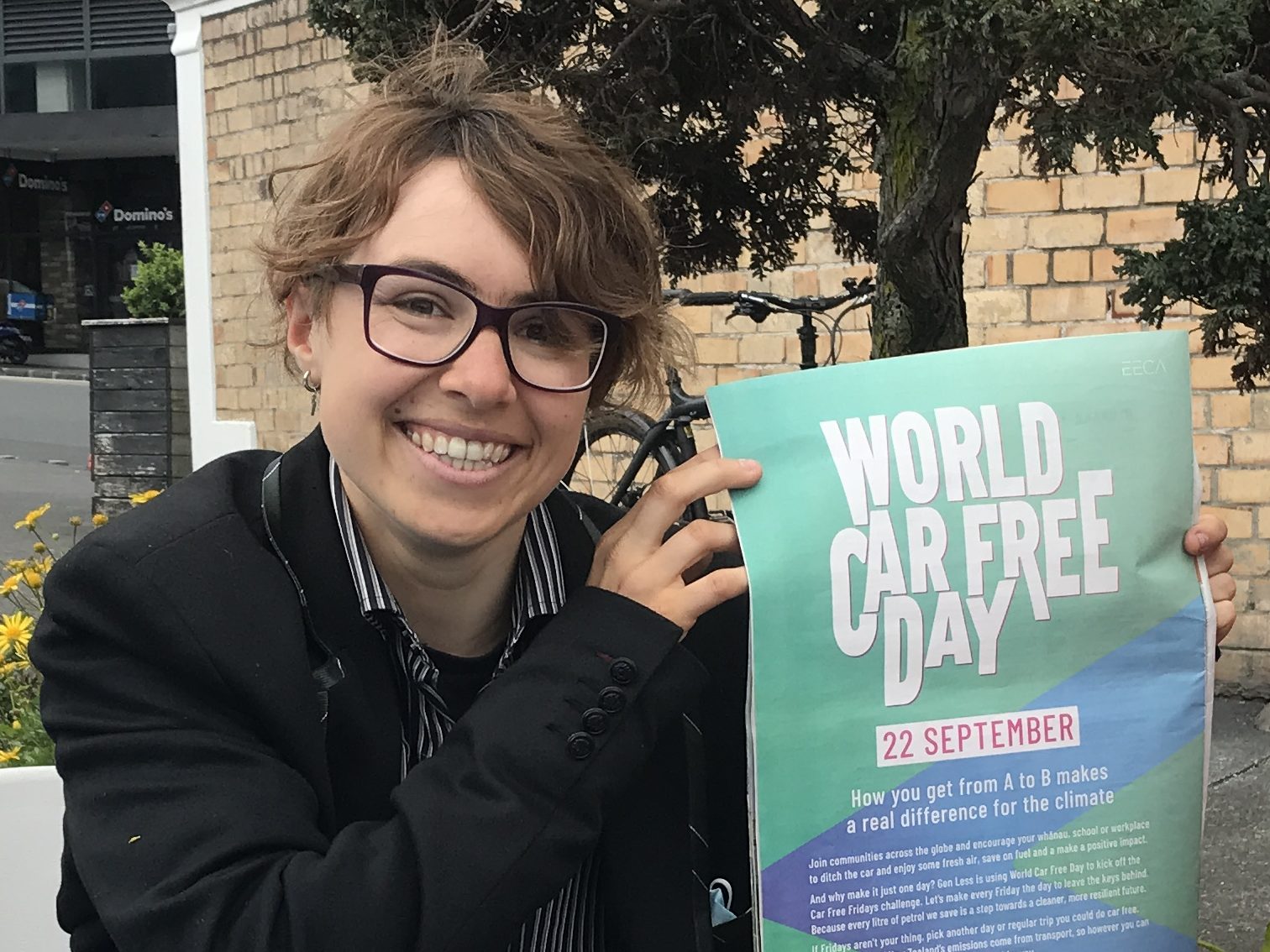
Earlier this year, to celebrate 2022 World Car Free Day (22nd September), Bike Auckland teamed up with Picnics in Parks to turn a couple of car park spaces into outdoor dining spaces. Tongue in cheek, d’Leafy grins and says “We figured the car parks wouldn’t be needed that day.”
They put out tables and chairs in the car park space, paid the parking meter, and ordered food and coffee from nearby cafes and restaurants. D’Leafy says the eateries seemed to be entertained, and overall were quite positive about them being there; they laugh “and they should be! If we weren’t taking up these car park spaces, there could be two cars here – and most cars are single occupancy. So that’s probably two people. Those two people may not even have been customers for those shops, but, if they were, they certainly would not have spent as much money as our groups of 10 and 19. Those eateries made a lot of money from us!”
Events like Parking Day and Picnics in (car) Parks offer an opportunity to reimagine what we can do with our parking spaces, and our road space; how might it look as a safer, greener and more equitable space?
Bike Kingsland also held a picnic in a car park, this one on New North Road, which included 15 happy people and one very adorable dog outside two popular Kingsland cafes; Little Q and Kingsland Social. The location was deliberately chosen in support of the proposed New North Road cycleway. The New North Road project involves removing some carparking to make way for improved bus and cycle access. It spans Upper Symonds street, New North Road, and a portion of Rosebank road – making a corridor all the way from the CBD to Avondale.
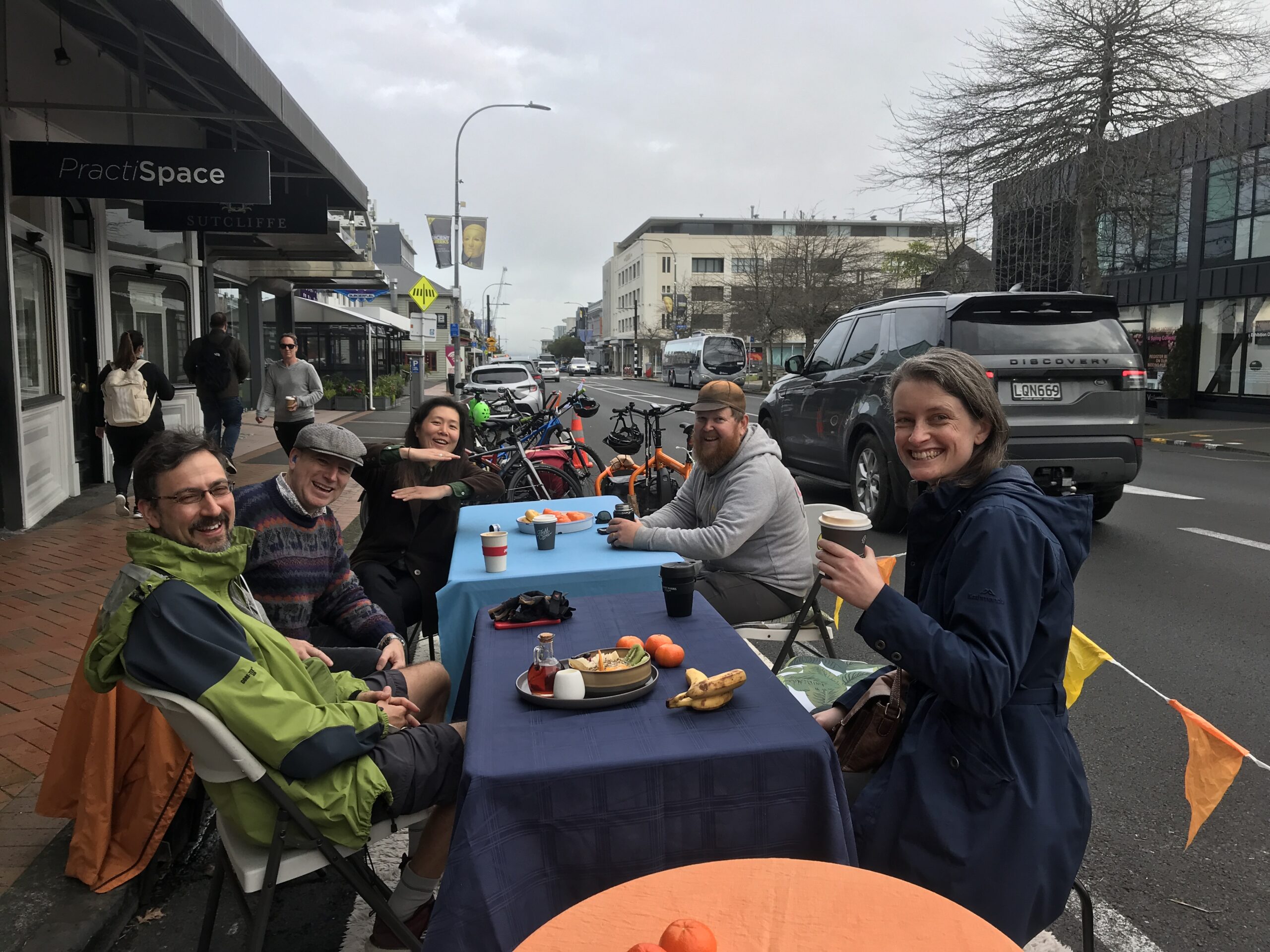
Cappuccino von Swagmeister from Bike Kingsland used to cycle some of this route for their work commute from Kingsland to Avondale. “A protected cycleway along New North Road would be great. It would certainly go a long way toward giving people transport freedom while the Western train isn’t running.” They hope that rail line closures might be an opportunity to speed up the delivery of this proposed cycleway. “When I worked on Rosebank, it would have been a lot nicer to cycle if New North Road was safe. It’s a much more direct route than the Northwestern Cycleway, and there’s loads of schools along there. Kids should be able to cycle to school safely.”
Although some businesses are afraid that removing the street parking would cause them to lose money, d’Leafy points out that people walking and cycling are more spontaneous shoppers “People driving are going from A to B, they’re going fast so they don’t notice much as they go past. It’s hard for them to move out of the flow of traffic and stop. But people walking and cycling are travelling more slowly, they are more likely to notice things in shop windows as they go past, and it’s easy for them to stop and have a look. This is certainly true for me, and is how I’ve met many of my neighbours and connected with local shops.”
D’Leafy points out that streets are more pleasant when there are fewer cars “when it’s safe more people bike, and when more people bike there’s less car traffic which also means the street becomes quieter and much more pleasant to be on, which in turn attracts more customers. Because of all of this, multiple case studies have found that cycleways along retail streets usually result in increased profits. It’s win-win-win!”
Check out our previous blog for tips for writing to your elected representatives and encouraging their support for the New North road corridor upgrades.
What have we lost?
It’s about more than emissions, d’Leafy says “A large amount of our public space is given over to cars. And in prioritising cars we have lost many things; it’s no longer safe for kids to play in the street, to walk and cycle to school, and neighbours don’t know each other because their streetspace is too loud and too unpleasant to hang out in.”
“But we can repurpose parking spaces to create a nicer streetspace, to create a space where neighbours interact and build community, and to create a more accessible transport system.”
“Increasing transport accessibility doesn’t just mean retaining car parks for disabled people – although of course that is absolutely important – it also means fit for purpose footpaths, safe accessible cycleways, and convenient, accessible public transport options – like providing buses which work for everyone. It’s shocking that in 2022 in Tāmaki Makaurau Auckland there are buses, train stations, and pathways which are inaccessible for many people who use mobility devices, and there are ferries and cycleways which are inaccessible for the types of bikes that many disabled people use. We need to fix this. Everyone has a right to participate in society, and everyone should be enabled to move around freely in our public space.”
Bike Auckland supports and encourages Auckland Transport to remove parking and flush medians on our arterials to make room for protected cycleways and bus priority lanes; a fast and affordable way to make safer streets for all.
D’Leafy says this is especially important right now, when our public transport system seems unreliable and inaccessible; “people deserve to be able to choose to get around in an affordable way, which is better for Papatūānuku, which is better for our health, and which can create quieter, and more pleasant streets to live on. Many people want to walk, cycle, scoot, skate, use mobility devices to get around. But it needs to be safe and convenient or there isn’t a real choice.”
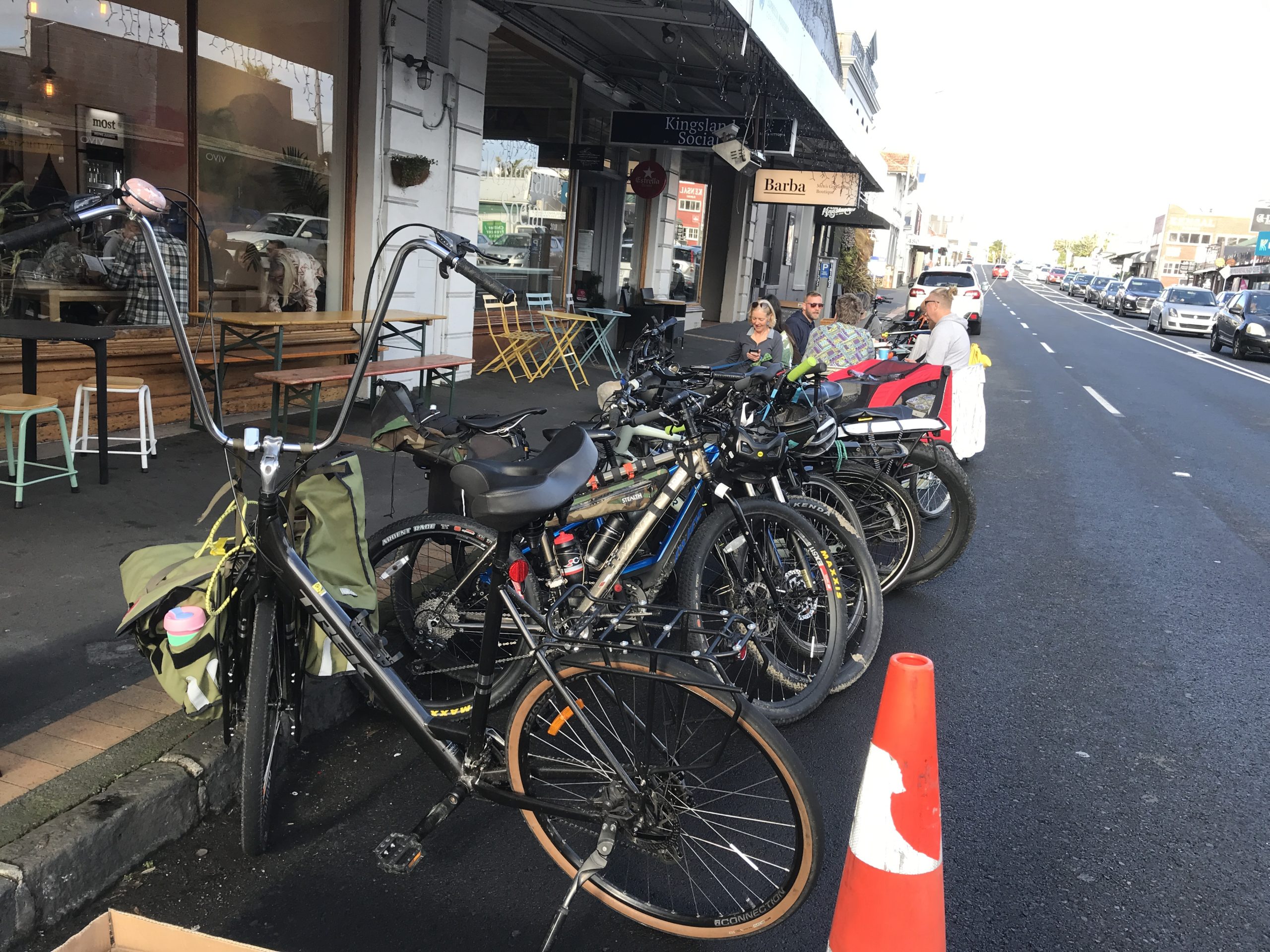
Want to see more safe places to cycle in your area? Check out our tips for writing to your elected representatives.
*24% of Aucklanders over 16 do not have a (restricted or full) driver’s licence. Including children over 5 we can say with confidence that more than 30% of Aucklanders do not drive. In addition, some people with drivers licenses choose not to drive, and do not own motor vehicles.



